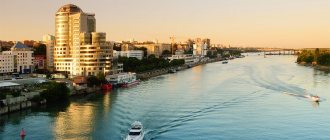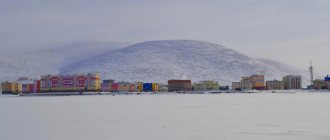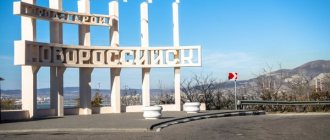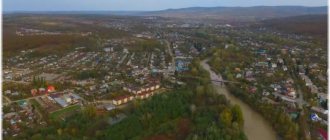Petukhovo
(winter hut
Petukhovo
, village
Petukhova
, village
Petukhovskoye
) is a village in Russia, the administrative center of the Petukhovsky rural settlement of the Petukhovsky district of the Kurgan region, within the Kurgan diocese.
Located at the lake. Petukhovo. Population - 460 people (2010) [1] Not to be confused with the city of Petukhovo, the administrative center of the Petukhovo district of the Kurgan region
- On the map: Yandex.Map, Google map
The exact time of the founding of the village of Petukhovaya near the lake of the same name is unknown. The revision of 1782 took into account the winter quarters of Petukhov, in which by that time 5 families lived. It was located west of the Peter and Paul Fortress along the Novo-Ishim fortified line and, according to information from 1795, belonged to the Utchansky volost of the Ishim district of the Tobolsk governorship.
With the founding of an independent parish at the beginning of the 19th century at the newly built stone Epiphany Church, the village of Petukhova received the status of a village. In 1820, the Petukhovskaya volost of the Ishim district was formed with its center in the village of Petukhovskoye. On January 1, 1826, the Petukhovskaya volost included the following villages: Rynkova, Gusino, Teplaya, Yudina, Berezovo, Korovashkova, Monastyrskaya, Slevnaya, Belaya, Kamennaya, Kazantseva, Gagarieva, Novokamenskaya [2]. In the 1840s, the village was assigned to the Petropavlovsk district, and by the 1870s it was again transferred to the Ishim district of the Tobolsk province.
The road from the city of Kurgan to the city of Petropavlovsk passed through the village, along which convoys from Eastern Siberia and the Akmola region to the cities of Kurgan, Irbit, Tyumen, as well as to Central Russia and back, passed almost continuously in winter and summer. In Petukhovsky, the Mikhailovsky Fair (from November 8 to 16) and markets were held annually: Epiphany (Epiphany) five-day (from January 6), Spassky three-day (from August 1) and five-day on the ninth Friday after Easter.
In 1906, a one-class school of the Ministry of Public Education was established in the village [3]. At the beginning of the 1910s, there was a bakery store, a wine shop, four trading stores, 22 windmills, a dairy, an oil mill, four forges, a fire shed, a post office, and a zemstvo station.
In 1924, the Petukhovsky village council was formed as part of the Petukhovsky district of the Ishim district of the Ural region of the RSFSR (since 1934 - within the border of the Chelyabinsk region, since 1943 - the Kurgan region). By the mid-1920s, a first-level school was operating in the village.
At the beginning of the 2010s, the village of Petukhovo housed a school, a first-aid post, a post office, two shops, a library, a cultural and leisure center, a communications office, and an automatic telephone exchange. The housing stock has stove heating, there is no running water or sewerage system, there is local water supply. In agriculture, the leading industry is farming, which specializes in grain production (the main cash crop is wheat).
Statistics
- 1782 – 5 families [4]
- 1795 - state peasants - 60 males, 51 females and retired soldier Fyodor Plotnikov with his family - 7 people; coachmen - 82 males and 103 females [5]
- 1869 - 204 households, 876 people [6]
- 1893 - 228 households, of which 4 were non-peasant, 1129 people [7]
- 1912 - more than 250 independent farms, 1395 people [8]
- 1926 - 365 farms, 1927 people [9]
Petukhovo
(Kurgan region)
OKATO code:
37226501
Founded:
1892
City since:
1944 City of district subordination (Petukhovsky district, Kurgan region)
Center:
Petukhovsky district
Telephone code (reference phone)
| 35235***** | 21-2-92 |
Deviation from Moscow time, hours:
2
Geographic latitude:
55°04′
Geographic longitude:
67°53′
Altitude above sea level, meters:
135 Sunrise and sunset times in the city of Petukhovo
External links [edit]
- Unofficial website of Petukhovo (in Russian)
| vteAdministrative divisions for the Kurgan region | |||
| Administrative center: Kurgan • Rural area. | |||
| Districts |
| ||
| Cities and towns |
| ||
| Urban settlements |
| ||
Map
| Petukhovo: maps |
Petukhovo: photo from space (Google Maps) Petukhovo: photo from space (Microsoft Virtual Earth)
| Petukhovo. Nearest cities. Distances in km. on the map (in brackets along roads) + direction. Using the hyperlink in the distance , you can get the route (information courtesy of the AutoTransInfo website) | |||
| 1 | Makushino | 42 (112) | Z |
| 2 | Chastoozerye | 55 (60) | WITH |
| 3 | Berdyuzhye (Tyumen region) | 86 (102) | WITH |
| 4 | Lebyazhye | 90 (113) | Z |
| 5 | Armizonskoe (Tyumen region) | 97 (300) | WITH |
| 6 | Kazanskoe (Tyumen region) | 106 (257) | NE |
| 7 | Mokrousovo | 107 (147) | NW |
| 8 | Half | 125 () | Z |
| 9 | Vargashi | 135 (147) | Z |
| 10 | Golyshmanovo (Tyumen region) | 150 (177) | WITH |
| 11 | Ishim | 154 (188) | NE |
| 12 | Omutinskoe (Tyumen region) | 157 (223) | WITH |
| 13 | Sladkovo (Tyumen region) | 164 () | IN |
| 14 | Ketovo | 164 (209) | Z |
a brief description of
The city is located on the Ishim Plain, 178 km southeast of Kurgan. Railway station.
Territory (sq. km): 41
Information about the city of Petukhovo on the Russian Wikipedia site
Historical sketch
Founded in 1892 as a station village on the Trans-Siberian Railway. highways. Petukhovo station opened in 1896; name after the neighboring village of Petukhovo, named after the surname Petukhov. Was a significant storage point.
Later, the village of Yudino (founded in 1779) became part of Petukhovo.
In 1903, a foundry and mechanical plant was built. City since 1944
[In 1939, 9.3 thousand people lived in the village of Yudino, the center of the Petukhovsky district, i.e. the history of the city is worth reconsidering]
Economy
Foundry and mechanical plant (railway equipment, spare parts for cars, diesel locomotives, etc.). Dairy products plant, meat and poultry plant.
In the Petukhovsky district, rye, wheat, oats, barley, buckwheat, millet, peas, and fodder crops are grown. They raise cattle, horses, pigs, and poultry. Beekeeping. Fur farming.
| Population by year (thousands of inhabitants) | |||||||
| 1939 | 9.3 | 1998 | 15.0 | 2008 | 11.4 | 2016 | 10.4 |
| 1959 | 13.0 | 2000 | 14.8 | 2010 | 11.3 | 2017 | 10.3 |
| 1970 | 12.1 | 2001 | 14.7 | 2011 | 11.3 | 2018 | 10.2 |
| 1979 | 11.8 | 2003 | 12.7 | 2012 | 11.1 | 2019 | 10.0 |
| 1989 | 14.6 | 2005 | 12.1 | 2013 | 10.9 | 2020 | 10.0 |
| 1992 | 14.3 | 2006 | 11.9 | 2014 | 10.6 | 2021 | 9.9 |
| 1996 | 15.1 | 2007 | 11.7 | 2015 | 10.5 | ||
“Petukhovo is the best place on the planet! If you write that this is not so, I will get you out of the ground!”
Traveler Ivan Shiryaev, who visited all the cities of the Trans-Ural region, compiled his rating
Kamyshin traveler Ivan Shiryaev, who set out to visit all the cities of Russia, shared his impressions of the Kurgan region and compiled the top 5 cities of the Trans-Urals.
Let us remind you that from May 26 to June 9, Ivan Shiryaev visited each of the nine cities of our region. While in Kurgan, Ivan visited the editorial office of “Kurgan and Kurgan People”. This is what he writes in his VKontakte group (https://vk.com/stopkaxak).
Fifth place. Shchuchye.
Near the city there are military units of the Federal Directorate for the Safe Storage and Destruction of Chemical Weapons. But local residents say that they have already stopped destroying chemical weapons and are switching to pharmaceuticals.
The city and its own brand do not need to be invented - it is already in the name. I found two monuments to pike: in the city park and next to the railway station. And two more pikes biting each other’s tails are depicted on the city’s coat of arms.
Simple but interesting yard art decorates the streets of the private sector. The rustic huts with stove heating contrast sharply with the fresh apartment buildings at the entrance from Kurgan. There is also a new, modern and large fire station where I was warmly welcomed.
What surprised me most was the new cemetery. There is not a single fence there. This is very rare for Russian cemeteries. Without metal piles, the necropolis looks neat and well-groomed.
On the board of honorary workers of the city, for some reason, the endings and cases are confused. And one of the streets was called “May 1st”.
It is interesting that Shchuchye received the status of a city exactly a week after the Victory in the Great Patriotic War.
Fourth place. Dalmatovo.
The oldest city in the region. The first settlement arose in the mid-17th century as a settlement at the monastery founded by Dalmat of Isetsky. The monastery survived the raids of nomads, peasant uprisings, the siege of the Pugachevites and fires. In Soviet times, within its walls there was a collective farm and state farm theater, then a hospital, and after the war - a factory. The majestic building of the Assumption Cathedral is in decline.
The monastery is interesting for its bastions and powerful fortifications.
In the city you can find entire paintings made from plastic bottle caps.
One of the most beautiful buildings in Dalmatovo is the Red School building, which now houses a local history museum.
The organizer and teacher of the first girls' school in Trans-Urals, Pavel Ioasafovna Cheryomukhina, was buried on the territory of the St. Nicholas Church. A monument “In gratitude for teaching” was erected next to the temple.
In the old cemetery you can see tombstones painted red. Perhaps this is a fashion?
Third place. Petukhovo.
The buildings of the museum, the registry office and the investigative committee are interesting. These are the beautiful houses of the merchant Degtyarev.
The very first monument to the leader of the world proletariat appeared in the Kurgan region in 1924, literally a couple of months after the death of Ulyanov-Lenin. It was erected precisely in Petukhovo. The monument is still decorated with cast iron plaques cast in those years.
Before the railway crossing, a Volga, broken down and dented in an accident, was installed with the inscription “Reckless Driver Finish”. Not far from this place there is a Likhach auto parts store.
But the main attraction, although it is not located in the city itself, is, of course, Bear Lake. Thanks to the Kolmogortsev family, I was able to visit both the resort and the village of Novoilinskoye, where I swam in the lake.
Medvezhye is famous for its great salinity and healing mud. It is large (61 square kilometers), but at the same time very small.
In summer, crustaceans and salted brine shrimp breed in large numbers in the lake, which give the lake a peculiar brown color and secrete enzymes that have a calming effect. Mineralized mud treats the nervous system and gynecological diseases, strengthens bones, joints, muscles, and accelerates the metabolic process. The sanatorium produces mineral water known as Medvezhye-11. The salinity of the water in Bear Lake varies. Sometimes it can even exceed the salinity of the famous Dead Sea (up to 360 g/l). The salty water of the lake is almost not captured by ice in winter.
Perhaps the city would not have been included in this rating, but Major Kataev from the state supervision sternly told me: “Petukhovo is the best place on the planet! If you write that this is not so, I will get you out of the ground!”
Second place. Shadrinsk
Particularly memorable was the visit to the birch bark workshop “Chesta”, the center of Russian folk culture “Lad”, the youth expeditionary research center and the local history museum.
Near the museum building there is a sculptural composition called “Old Town”, but more often it is called the monument to the Shadrinsk goose. They say that the local governor during the time of Catherine II tried to use cunning to obtain funds for the construction of new houses in the city. But a misinterpretation of the empress’s answer (she wanted to see the goose-voivode) led to the Shadrin geese being brought to the capital. There, the fried bird was highly praised by the British ambassador. And they began to transport these geese from the Trans-Urals to St. Petersburg. Since then, the expression “Shadrinsky goose” has become a common noun. This is what they began to say to denote the cunning of the Shadrinians.
It turns out that one of the first theaters in Russia was founded in Shadrinsk, and it is still alive.
The city is very proud of the Soviet sculptor Ivan Ivanov, who took the pseudonym Shadr. It was he who depicted Lenin in the coffin. This work by Shadr can be seen in the local history museum.
It is interesting that residents of the Kurgan region, especially towards Shadrinsk, clearly pronounce “tsya”. They don’t say “delaetsa”, not “acquaintance”, but exactly as it is written: “delaetsa”, “to get acquainted”.
First place. Mound
The capital of Trans-Urals, of course, wins in comparison with the cities of the region. But at the same time, there is no feeling that you are in a regional center. Life here is quiet, provincially measured. No traffic jams or fuss.
Since I had previously visited Chita, Petrovsk-Zabaikalsky and Turinsk (places of exile of the Decembrists), it was doubly interesting for me to get acquainted with the history of the revolutionaries exiled to Kurgan. From 1830 to 1857, 13 Decembrists lived here. They contributed greatly to public education and the development of the then very small Kurgan.
At the Ilizarov Center for Restorative Traumatology and Orthopedics, it was interesting to see with my own eyes the apparatus created by a Mountain Jew. Ilizarov's discovery was that bone growth could be monitored and manipulated to correct defects and treat injuries.
On the station square, a monument to the founder of the city, Timofey Nevezhin, has already been installed, but not yet opened. It is planned to be officially opened during the City Day celebrations in August. In the meantime, wrapped in plastic, he looks terrifying.
The aviation museum in Kurgan is interesting because there you can not only walk past airplanes, but also climb inside iron birds!
Ivan Shiryaev traveled around the region by passing cars. Many fellow travelers turned out to be very interesting and sincere interlocutors. Some of them even slightly changed their route in order to give Ivan a ride to the right place.
Ivan Shiryaev expresses gratitude to the Main Directorate of the Ministry of Emergency Situations of Russia for the Kurgan Region for assistance in organizing overnight stays in the fire departments of the cities of the region; Department of Culture of the Kurgan Region for assistance in visiting museums in the region; Kurgan regional and Shadrinsky branches of the Russian Geographical Society, hospitable residents of Kurgan, Petukhovo and Petukhovo district.
The editors of kikonline.ru and the newspaper “Kurgan and Kurgan” wish that Ivan continues to have good luck and meet good, interesting people along the way.
If you witness an interesting event, send messages, photos and videos to Viber and WhatsApp to phone number. : +79195740453, in our group “VKontakte”
Our Telegram channel
Vkontakte community
Yandex.Zen channel
An excerpt characterizing Petukhovo (Kurgan region)
At the same time, the chief of artillery of the 1st Corps, General Pernetti, with 30 guns of the Compan division and all the howitzers of the Dessay and Friant divisions, will move forward, open fire and bombard the enemy battery with grenades, against which they will act! 24 guns of the Guards artillery, 30 guns of the Compan division and 8 guns of the Friant and Desseux divisions, a total of 62 guns. The chief of artillery of the 3rd Corps, General Fouche, will place all the howitzers of the 3rd and 8th Corps, 16 in total, on the flanks of the battery, which is assigned to bombard the left fortification, which will total 40 guns against it. General Sorbier must be ready, at the first order, to march with all the howitzers of the Guards artillery against one or another fortification. Continuing the cannonade, Prince Poniatowski will head towards the village, into the forest and bypass the enemy position. General Compan will move through the forest to take possession of the first fortification. Upon entering the battle in this way, orders will be given according to the actions of the enemy. The cannonade on the left flank will begin as soon as the cannonade of the right wing is heard. The riflemen of Moran's division and the Viceroy's division would open heavy fire when they saw the beginning of the attack of the right wing. The Viceroy will take possession of the village [of Borodin] and cross his three bridges, following at the same height with the divisions of Morand and Gerard, which, under his leadership, will head to the redoubt and enter the line with the rest of the army. All this must be done in order (le tout se fera avec ordre et methode), keeping the troops in reserve as much as possible. In the imperial camp, near Mozhaisk, September 6, 1812.” This disposition, written in a very unclear and confused way, if we allow ourselves to regard his orders without religious horror at Napoleon’s genius, contained four points - four orders. None of these orders could be or were carried out. The disposition says, first: that the batteries set up at the place chosen by Napoleon with the Pernetti and Fouche guns aligned with them, a total of one hundred and two guns, open fire and bombard the Russian flashes and redoubts with shells. This could not be done, since the shells from the places appointed by Napoleon did not reach the Russian works, and these one hundred and two guns fired empty until the nearest commander, contrary to Napoleon’s orders, pushed them forward. The second order was that Poniatowski, heading towards the village into the forest, should bypass the left wing of the Russians. This could not be and was not done because Poniatovsky, heading towards the village into the forest, met Tuchkov there blocking his way and could not and did not bypass the Russian position. Third order: General Kompan will move into the forest to take possession of the first fortification. Compan's division did not capture the first fortification, but was repulsed because, leaving the forest, it had to form under grapeshot fire, which Napoleon did not know. Fourth: The Viceroy will take possession of the village (Borodino) and cross his three bridges, following at the same height with the divisions of Maran and Friant (about which it is not said where and when they will move), which, under his leadership, will go to the redoubt and enter the line with other troops.
Parks, gardens, tracts of the Kurgan region
Among Kurgan’s natural monuments, forests and parks occupy a special place, where you can take a walk with the whole family, admiring rare plants and centuries-old trees.
Prosvetsky Arboretum
- Address: pos. Stary Prosvet, Ketovsky district.
There is a small arboretum in the Ketovskaya district. The area of the natural monument is about 10 hectares. The history of the arboretum began in 1893, when the Forest School opened in Kurgan. The following year, a forest nursery was founded, in which practical classes were held for students.
The idea for the nursery was proposed by local forester Viktor Engelfeld. The teachers imported various exotic plants from other provinces and countries and, together with their students, grew them in the arboretum. Initially, the nursery was called “Steep Log”, until in 1898 one of the teachers, Alexander Naumov, proposed renaming it “Lesnoy Prosvet”.
In 2001, the unique collection of plants received the status of a natural monument. In 2010, the Forest Museum was opened in the village of Stary Prosvet on the basis of the arboretum. There are several recreation centers in the surrounding area.
Cedar Garden
- Coordinates: 55.339653, 64.446830.
On the outskirts of the village of Razdolnaya there grows a wonderful coniferous garden, filling the entire area with aroma. The garden was founded by local resident Trifon Plotnikov in 1980. Trifon Matveevich planted Siberian spruce and Siberian pine, which are atypical for the Trans-Urals.
Cedars have successfully taken root on Kurgan soil and to this day delight guests and village residents. In 2011, the garden received the status of a natural monument of regional significance.
Elizavetinsky Bor
- Address: Yurgamysh district, village. Elizabeth.
The pine and birch forest near the village of Elizavetinka is one of the oldest in the region. Many trees celebrated their 100th anniversary, and some specimens have lived for 170 years.
At the foot of the pines grow a variety of shrubs: black cotoneaster, blood-red hawthorn, rosehip and many others. Among the thorny beauties there gurgles a spring, consecrated in honor of the martyr John the Warrior.
"Okhoniny Brovi" tract
- Coordinates: 56.274767, 62.352517.
On the banks of the Sinara River there is a beautiful tract with an unusual name - Okhoniny Brovi. Local residents nicknamed the two coastal bends eyebrows. The river eroded the ledges and exposed layers of marl and diatomite.
The slopes are covered with small-leaved forest; among the plants there are petrophytes, rare for the Trans-Urals, growing on stones and rocks. The tract is beautiful at any time of the year, and therefore is popular with tourists.
Landscape park
- Address: working village Kargapolye, st. Mira.
The park in the village of Kargapolye can be called the most unusual park in the Kurgan region. The area was developed in 2004, the grand opening of the attraction was timed to coincide with the 80th anniversary of the Kargapol district.
The area has green lawns, colorful flower beds, pyramidal poplars rustling in the wind, pine trees and blue spruce trees.
Workers created several small ponds, a waterfall fountain and a colorful stone bridge. Whole families walk in the park; it has playgrounds with attractions and entertainment for adults.









